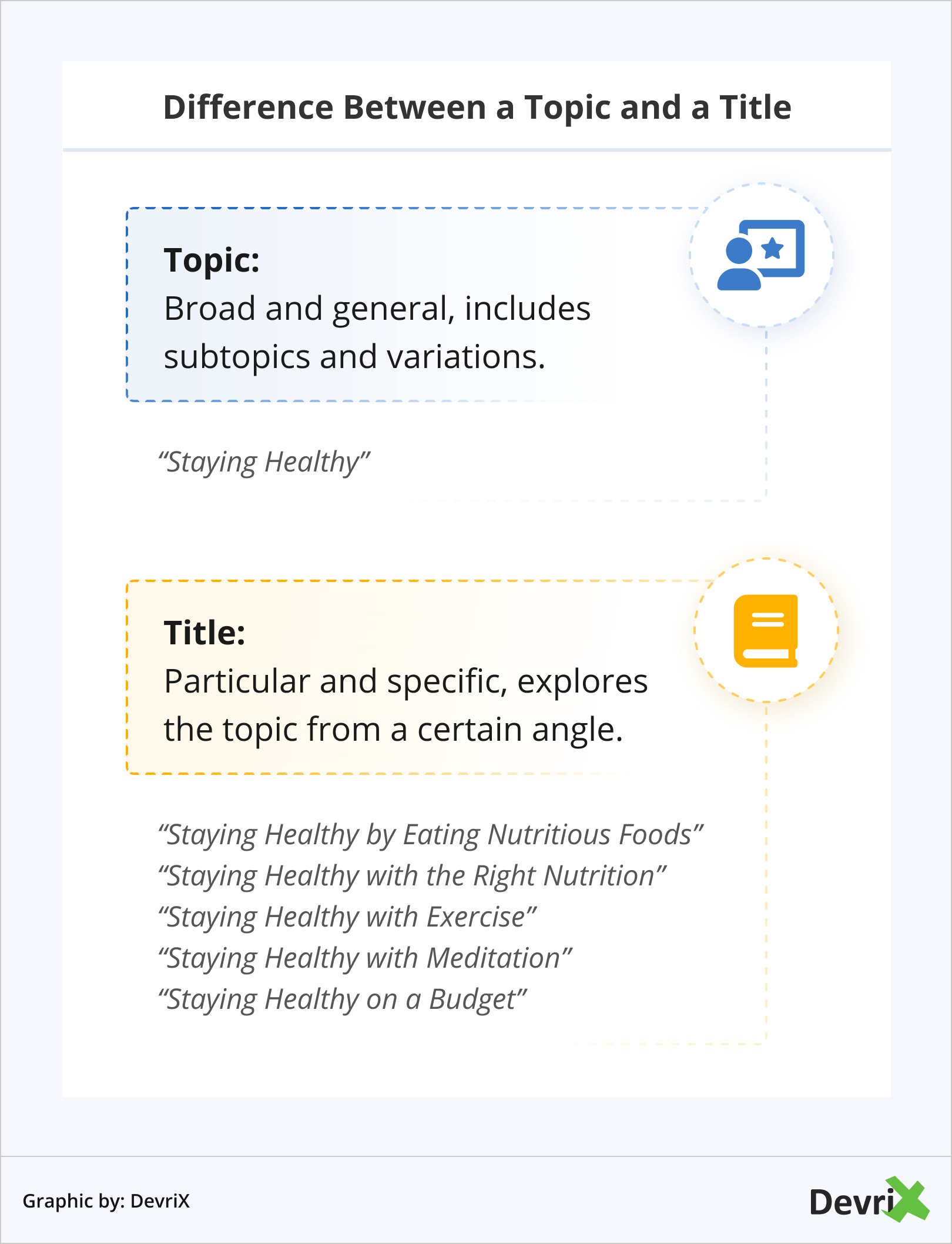How To Make An Interesting Title For A Blog
Last modified: 11/10/2021
Read time:
When devising an inbound and content marketing strategy, it is important to understand that great content is not the only thing that defines success. Creating high-quality blogs, and SEO writing are, of course, essential for conversions. However, what makes the customer click are the catchy blog titles.
Good blog titles are an extremely important tool to get your content in a top-ranking position in the SERPs, up there with the very best. They encourage engagement, boost website traffic, and can even create brand awareness. Basically, this is the real selling tool for your content online. They serve as your brand's business card on social media, emails, and search engines and often are the first touchpoint a client may have with your company.
1. Working Title
One of the common mistakes people make is that they confuse a topic with a working title. The two terms are, indeed, closely related, but they serve different purposes. So, what exactly is the difference between a topic and a working title?
A topic is something that is very general and could have many branches, subtopics, and variations.
For example, a topic could be something like, "Staying Healthy". A working title, on the other hand, is a lot more particular. For example, the "Staying Healthy" topic can be developed via a variety of titles such as "Staying healthy by Eating Highly Nutritious Foods", "Staying Healthy with the Right Nutrition", "Staying Healthy with Exercise", "Staying Healthy with Meditation", "Staying Healthy on a Budget", and so on.
You can see the difference between the two – working titles are specific and focused, while the topic is broad and can be explored from numeros different angles.
Also, titles should provide the readers with enough information about the blog to let them know what it is about.

2. Accuracy is Important
One of the most important things to consider when working on your titles is to be true to your readers. Choosing a title that does not exactly deliver what it promises can be really damaging to both your content and your ranking.
Google has strict policies against click-baits, and titles that don't match the content. Violating them can constrain the performance of your content in organic searches, and hurt your marketing efforts.
Furthermore, misleading titles could actually put off your readers, and you might end up losing many. For example, "Guaranteed Ways to Get Skinny in 10 days" sounds like a great title doesn't it? Who would not want to lose fat in 10 days? The title may, indeed, attract a lot of readers, but we all know it is impossible to get skinny in 10 days – it requires a lot of work and dedication for a longer period of time. When the readers do not get the kind of information they expected, they may start doubting the credibility of your content, which will eventually damage your reputation.
This is why the accuracy of your content is so important, and you shouldn't play with the readers' expectations. The title should only state what the content is about without trying to trick the reader into clicking. However, if you really believe that there is a plan that can make a difference in 10 days, instead of using the unrealistic title mentioned above, use something like "Guaranteed Ways to Drop Substantial Amount of Weight in 10 days". This sounds more realistic and can actually save a reader from getting disappointed.
It is always the best idea to deliver what you promise when it comes to titles. Therefore, if you are ever confused about making a compelling title or an accurate one, always go for accuracy.
Some people think that the truth can be hidden with a little cover-up and decoration. But as time goes by, what is true is revealed, and what is fake fades away. – Ismail Haniyeh
3. Make the Title Appealing
Follow the S.M.A.R.T rule to make your title appealing.

Yes, there is no doubt that you must be accurate in terms of the information in the content, but that does not mean that you cannot write catchy blog titles. You can and should play around with your phrasing to make it more appealing while still staying truthful.
One of the ways of doing that is by playing around by alliteration, making it fun for readers to read and creating an impact on their mind. Or you can make your title look appealing by using strong language.
For example, powerful expressions such as"Things Employers Hate ", "Things You Must Never Do" or "Exquisite", are a great way to make your blog title catchy and attract readers towards it. However, it is important to abstain from overdoing it, because otherwise you risk sounding unnatural. The title should have a right balance of strong and subtle language to make it look appealing.
It is also important to let the reader know about any format specifications or added value the article provides. You can do that by putting a bracket at the end, for example, [EBook], [Photos], [Infographic], [Guide], etc. This will let the reader know what to expect and can boost the click-through rate of your blogs.
It all comes down to the kind of readers you have in your audience. Learning about their preferences and the kind of language that gets their attention will enable you to compose the best blog titles to attract them.
4. Clarity First, SEO Second
The reason why you should prioritize clarity before SEO is because more often than not, trying to please Google can actually make your title sound a bit odd.
If you can easily optimize the title for search, thumbs up, but writing for humans, rather than robots is a lot more important. In fact, it should always be your initial goal. There is no doubt that keywords make a lot of difference but what is more important is how much the readers respond to the title. If your title is clear and readable, it will get a lot more clicks and people would share it more often, and this is automatically going to give it a better standing in search engines.
So, if you are going to make a title try to aim towards clarity rather than flooding it with key words. Or if you can keep the right balance between both, go ahead.
5. Keep Your Title Short and Sweet
If you are thinking that there is a one size fits all title length that fits every platform online, think again. The character count of the title depends completely on the place you want it to appear.
For example, if you want a post to do well in search, then it is ideal for you not to exceed the 65 character limit, so it appears in the search results and doesn't cut off. If you want it shared on social media, say, Twitter, you must know that you have only 140 characters to work with and that's without the 22 characters for the URL, i.e. you are only left with 117 characters. So, it is best to tweak the length according to the platforms you target.
For example, the title "5 Benefits of Books You are Unaware of" is short enough to be shared on Twitter but if you needed it to be shorter, you could rephrase it to state "5 Perks of Books You're Unaware of".
See the difference? Although the rephrasing is very subtle, it both keeps the original idea and saves character space.
6. Use Numbers
You may have noticed that listicle articles are still hot these days. When you look at a magazine, regardless of what it's about, you will see headlines with numbers. There is a reason why everyone is using them to make their blog titles catchy – it works even better online.
One of the benefits of putting numbers in your title is that they make the reader feel they know exactly the amount of information they are about to receive. In addition, it is easier for people to remember information in numbers as opposed to long and boring blogs.
Numbers can also tempt the reader to read because they will expect quick information. Listicles are easier to scan and enable the people to evaluate the content and decide whether they want to read it. Even those who are on the move, will find it more convenient to read and may save your article for further inspection.
Furthermore, numbers are important for search engines. Algorithms find it easier to understand text that is divided into portions, and consider numbered content to be more important. Listicle articles are also prone to obtain more featured snippets, and show better results in the SERPs.
So, it is a good idea to consider using numbers to make your blog title more catchy.
7. Make Promises

This is by far one of the best ways to make your blog title engaging. When you make a title, try to tempt your reader, guarantee them that they will learn something new, obtain a new skill, or find out something they didn't know. This really makes the title appealing and it attracts the reader.
What you need to do is challenge the reader that you are about to give them something you are sure they do not know. For example, in a catchy title like "5 Benefits of Sleep You Didn't Know", there are two important things to notice:
- It uses numbers (which we discussed above).
- It uses "didn't know" to instigate curiosity.
However, don't forget that when you make a promise in your title, you the content has to deliver.
8. The Use of When, How, or Why
One of the great ways of making your blog title catchy is by using question-words like how, when or why. This formula works because you are promising the reader answers, thus giving them a reason to click. Furthermore, How-to articles, a.k.a. guides, and tutorials are still some of the most sought-after types of content out there because they enable the reader to learn something new.
People perform searches looking for solutions to their problems and answers to their questions, and a title that matches their intent can easily be their first choice.
For example, "How to Make Your Content highly Sharable" or "Why is Social Media Marketing Effective?" etc. These kinds of titles will persuade the reader to go and check out what the blog has to offer.
In addition, questions are often long-tail keywords and may improve your content's visibility in organic searches.
9. Don't Use Complicated Words
It is important not to confuse difficult words with strong or impact words. As mentioned, in order to make your blog title catchier, you need to use quality adjectives, but at the same time you also have to keep in mind that they should be easy to understand by all of your readers.
Consider using words that are unique, yet simple. For example, "5 Exceptional Online Marketing Tips". The word "exceptional" is simple, and it sounds good.
Otherwise, you risk confusing your readers and making them feel uncomfortable. This decreases the chances of them clicking the title and reading your blog.
10. Use Blog Title Capitalization
Blog title capitalization, also known as headline case or title case, is the practice of using capital letters on all nouns, verbs, pronouns, and adverbs in the title. It is a commonly accepted digital style that aims to make the heading stand out as compared to the rest of the content.
Although it may seem a tad unnatural to people who are used to reading books and other text formats, title capitalization is very useful for making your blogs more readable.
Aside from the titles, this formatting style should also be used in the headings in subheadings, including H1, H2, H3, etc.
11. Look for Inspiration
While you are trying to come up with the perfect title, you should consider borrowing ideas from other popular blogs. Of course, this doesn't mean you should steal or copy/paste someone else's title. However, you should keep an eye for interesting phrasing, powerful words, and appealing topics that may make your blog titles catchier.
Consider making a list of those and refer to it whenever you find it difficult to come up with a fresh idea.
12. Brainstorm the Title with Others

Once your title has gone through all the filtration mentioned above, it is time to bring the idea out and share it with people before you post it on the internet.
One last thing to do before finally deciding the headline for your blog is to discuss it with others, in a brainstorming session with the people around you. Explain the post idea and let your peers make suggestions or changes. It is good to have more people discuss the title so they can share their own thoughts and points of view and help you to make improvements, if there is room for any.
Bottom Line
Now that you know all the important elements of creating a catchy blog title, you can consider adding them to your workflow and writing process.
Every factor has its importance and neglecting it can have a negative impact on your title's click-through rate. However, if there's one thing to always strive towards, it's to attract the user's interest and keep them engaged. If you fail in doing so, no matter how good a blog you are posting, it is not going to reap success. So roll your sleeves up, and start editing those catchy blog titles until you have perfection.

Team DevriX
Blog Writing & Content Creation
Our marketing team is responsible for the creation of the content on the DevriX website and social media profiles. We can provide content production & marketing services for you, too: link. Contact us to start your Inbound Marketing Retainer now.
How To Make An Interesting Title For A Blog
Source: https://devrix.com/tutorial/12-simple-steps-to-write-engaging-catchy-blog-titles/
Posted by: blanfordhendis.blogspot.com

0 Response to "How To Make An Interesting Title For A Blog"
Post a Comment